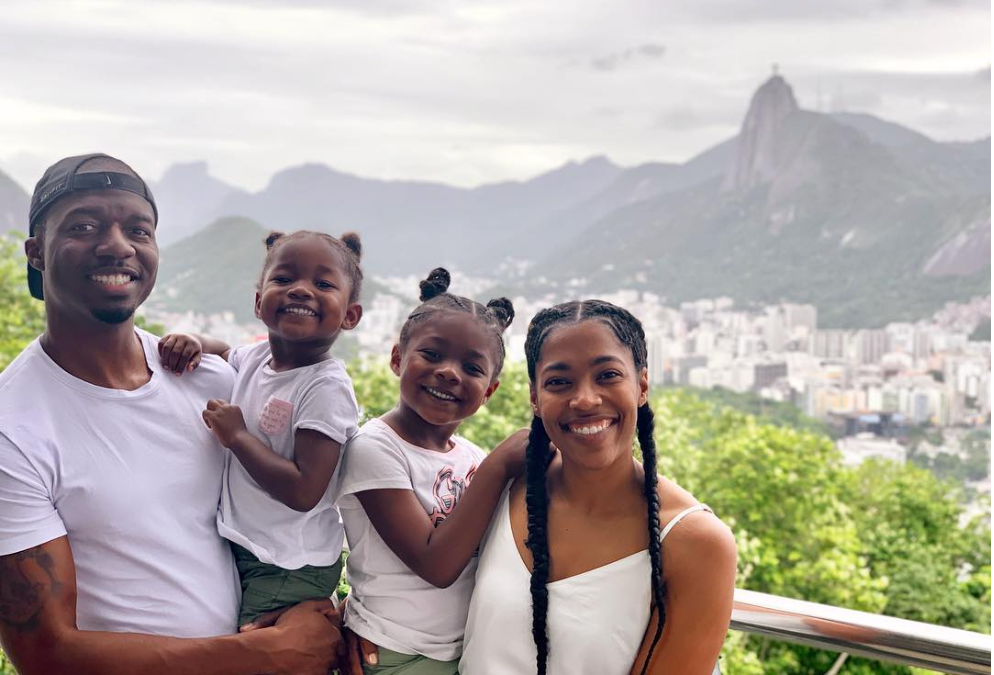By Hannah Freedman
Black travel bloggers and mothers Monet Hambrick and Karen Akpan share their advice for traveling as a family of color.
“If you search for ‘traveler’ or ‘family travel’ in Google images, you will notice that families that look like mine are missing,” says Monet Hambrick, who travels frequently with her husband and two young children, documenting it on her blog and Instagram account @thetravelingchild.
Karen Akpan—who travels the globe with her husband, nieces, nephews, and 6-year-old son, Aiden, and posts about their adventures on @themomtrotter—saw a similar gap in the travel space. It especially struck a chord with her one day when Aiden said to her, “We travel to all these places, but I’m not seeing other kids that look like me. Where are all the brown people?”
When Akpan couldn’t find a place that solely promoted and encouraged travel for families of color, she decided to create her own Facebook group to address this need. Thus, Black Kids Do Travel was born. In just under two years, the group has already grown to over 20,000 members and includes a blog and an Instagram account, as well. The group has become a haven for black travel families where they can share experiences and ask questions that aren’t being addressed in other places.
“Traveling with our kids is so important because there is more to the world than our neighborhood,” explains Hambrick. “We believe travel has taught our family flexibility, allowed us to learn about other cultures, and see that there are a lot of good people in this world.”
For diverse families and families of color, it might be even more imperative. “Most of the racism or uncomfortable situations due to race we’ve faced have been in the United States,” says Hambrick. “Not that all people of other races in the US are racist, but the racial tension in the US is actually one of the reasons we love traveling abroad: to show our children that people who don’t look like us are nice and welcoming, even if it’s not the case for some people of other races.”
Below, the two seasoned jet-setting moms share their best travel advice and takeaways for other families of color.
Community Is Key
“Once I started the Black Kids Do Travel group I thought, ‘Wow, there really was a need for this,’” says Akpan. She recounts times of being denied Airbnb bookings and struggling in other spaces for the racial prejudices to be recognized.
“In other groups, it was just people saying, ‘Oh, it’s fine. There’s nothing wrong.’ But talking specifically with other black travelers, they’re all saying, ‘Oh my gosh, that area, me too! I can’t book an Airbnb there either.’ My group is different in the sense that you can talk about things with people who understand. It’s a place where people can ask about things that maybe other people don’t have to worry about, whether it’s ‘what can I do,’ ‘where can I go,’ or ‘how will I get treated here?’”
Safety is a topic that’s frequently discussed among black travelers. Akpan says that some of the most discussed topics in the group are whether areas are safe, how to react in specific uncomfortable situations, and whether similar situations have happened to other black travelers. “Every time we go RVing, the main question I get is whether it is safe for black families at RV parks,” Hambrick says.
Be Prepared (and Prepare Your Kids) for Curious Questions
“I wouldn’t say we’ve necessarily faced racism abroad, but curiosity,” Akpan explains. “For example, we were on one trip and somebody asked my son, ‘Why are you so black?’ That’s honestly a case not of racism, but of social etiquette and curiosity. So he explained to the other person, ‘It’s melanin—that’s what makes my skin this color and that’s what makes it beautiful.’”
Both moms have stories of people trying to take photos of them and their children without permission. “These are things I have to teach my kids how to react to. I have to coach them to know that if somebody comes up to you to take your picture, just look away and say ‘no, please do not take my picture,’” Akpan explains.
Remember Your Spending Power
As Hambrick was quick to point out, Black Americans spent $63 billion on travel in 2018. “Yet ads for destinations and brands’ Instagram feeds would have you think we don’t travel,” she laments. “We’re missing from the brochures of many destinations, including ones that have mostly black people living in the country.”
Akpan also feels a lack of representation and wishes tourism boards made it a priority to be more inclusive to diverse travelers. She puts it simply: “If we don’t see ourselves on the poster, we don’t think we can go there.”
She recalls being at a travel conference where several states had booths and lighting up when she came across the lone state that had any diverse travelers in their marketing. “I had never considered traveling there before, but I just wanted to go immediately because I felt seen and accepted and welcomed.”
Lead by Example
Akpan shares a poignant experience recently brought up in the Black Kids Do Travel Facebook Group when a black woman told a family member she was traveling abroad. His response was, “Didn’t you just go somewhere? You’re traveling again? That’s some white people shit.”
Akpan says that’s a very common feeling and sentiment in the black community. “Black children often aren’t exposed to it. Do people of color travel? Yes. Is it a priority for them? No.”
She’s quick to add the why: “Travel has been restricted since way back. We couldn’t be in certain places, in certain hotels. For me, Black Kids Do Travel is about more than just a travel blog—it’s a place where another black kid can look and say, I see you here. I can go here.”
She further explains why changing the narrative around travel for black families is both difficult and essential. “If your family never traveled, your parents never traveled, if your grandparents never traveled, how do you just get up and want to go somewhere? The biggest thing for me right now is changing that narrative—making sure our children see everything and become well-traveled so that their children can be world travelers, too. And it takes a community to do that.”
See Original Article at Here Magazine



